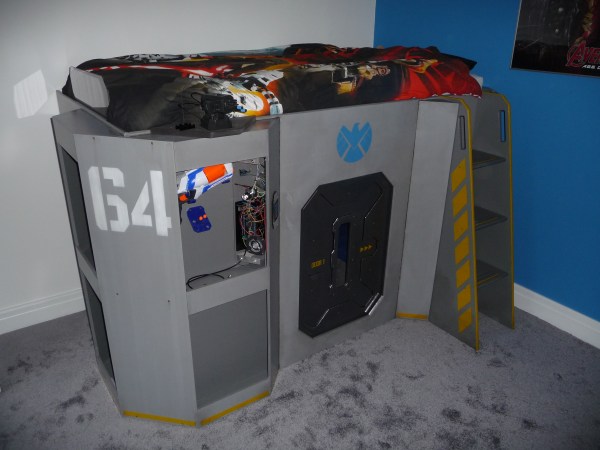Minecraft has come a long way since [Notch] first thought up the idea that would eventually make him a billionaire. The game can be enjoyed on so many levels and become so engaging that grown adults who should know better spend far more time playing it than working on, say, their backlog of Hackaday posts. As if that weren’t bad enough, now Minecraft threatens to break out of screen with the ability to control a WiFi light bulb from within the game.
For those unfamiliar with Minecraft, it’s an open world game that allows players to interact with blocks of various materials. Players can build, destroy, explore and create landscapes and structures. An active modding community contributes everything from cosmetic texture packs to new block types with extended functionality. It was one of these mods that was leveraged to “break the fourth wall” in Minecraft. [giannoug] used the OpenComputers mod, which allows placement of programmable in-game computers with a full complement of peripherals, including an Internet connection. That allowed [giannoug] to send commands to his Brand X eBay WiFi light bulb, the protocol for which his friend [Thomas] had previously reverse engineered. Flip a switch in Minecraft and the real-world light bulb comes on instantly. Pretty cool.
We’ve seen quite a few builds where Minecraft blocks inspired real-world lamps, but this is a step beyond and might be a great way to get kids into programming using Minecraft. But it’s not the first time Minecraft has broken the fourth wall – check out this 2012 effort to build a microcontroller-based Minecraft server that can toggle pins from within the game.
[Thanks to aggvan and Stathis K for the near-simultaneous tips!]



 The first video
The first video


 Inside are glowing display cases featuring some of his son’s favorite Marvel superhero’s equipment — ready for use. But what’s really cool is the command console.
Inside are glowing display cases featuring some of his son’s favorite Marvel superhero’s equipment — ready for use. But what’s really cool is the command console.











